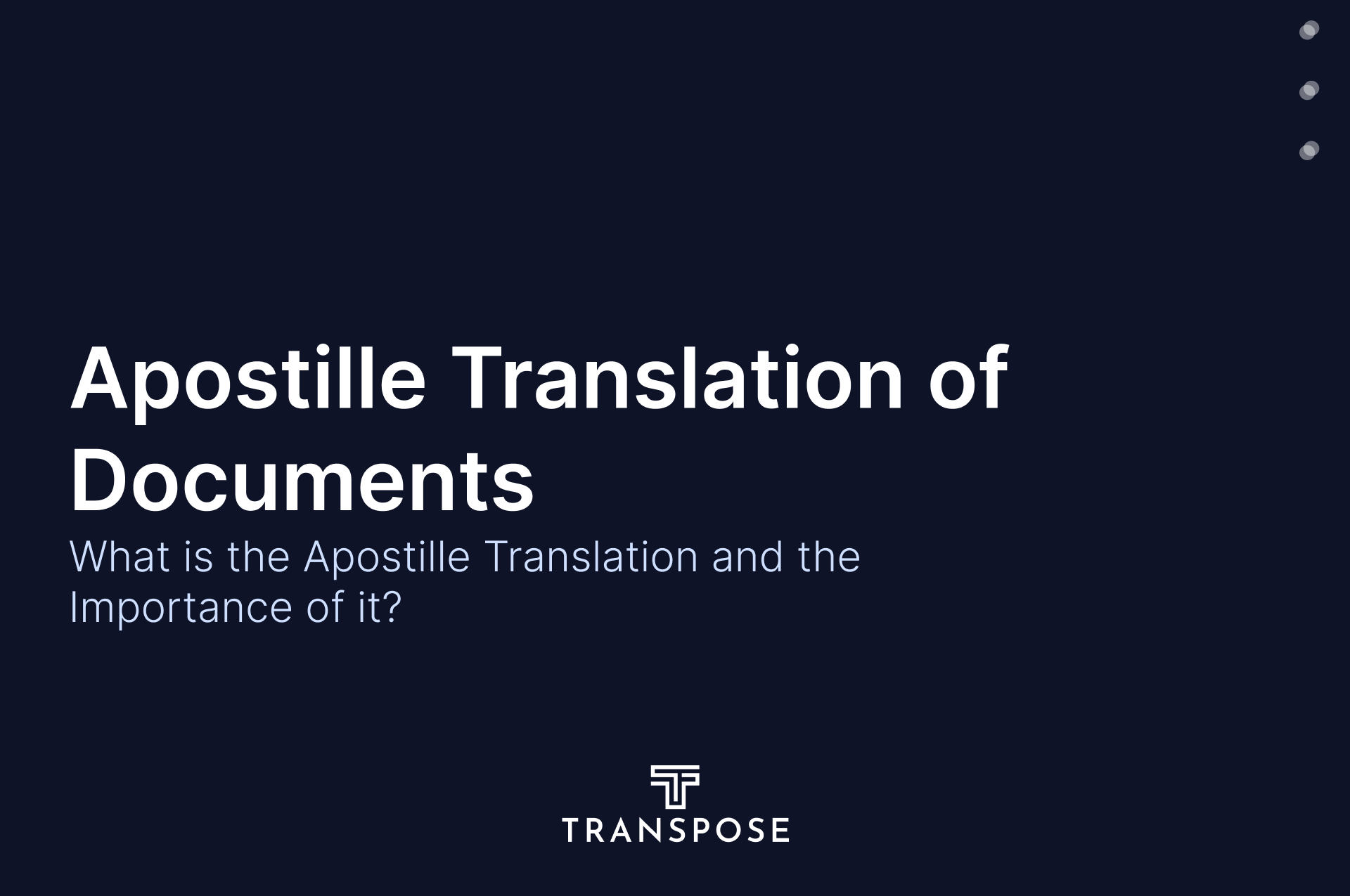Apostille translation combines two steps you often need to use documents abroad:
- Getting an apostille certificate to prove the document is genuine, and
- Getting a certified translation so officials can read it in their language.
If you’re handling business expansion, legal matters, or compliance, doing both steps correctly helps your documents get accepted fast.
What is an Apostille Translation?
An apostille translation is a certified translation for a document that either already has an apostille or will receive one after translation.
An apostille is a certificate attached to your original document. It confirms that the signatures and seals on it are real. With an apostille, your document is valid in all 124 Hague Convention countries without extra embassy legalization.
The translation part ensures the content is accurate in the target language and meets local rules.
Example: Submitting French incorporation papers to UK authorities usually needs both an apostille (proving the papers are genuine) and a certified English translation (so officials can read and accept them).
Key Components of an Apostille Translation
- Original document in the source language
- Apostille certificate from the issuing country’s authority
- Certified translation of the document
- Translation of the apostille certificate (often required)
- Translator’s certification statement or sworn declaration
What is the purpose of an apostille?
- An apostille is international proof that your document is genuine and issued by the right authority. It removes long embassy chains, so cross-border filings often move from weeks to days.
Business benefits:
- Faster market entry and vendor onboarding
- Simpler compliance submissions
- Court filings abroad without diplomatic steps
- Smoother hiring when credentials are pre-authenticated
Common business uses for apostilled documents:
- Company registration certificates for foreign subsidiaries
- Powers of attorney for overseas representatives
- Academic credentials for professional licensing
- Court judgments for international enforcement
- Notarized contracts for cross-border deals
Documents that typically need apostilles
- Birth, death, and marriage certificates
- Diplomas and transcripts
- Criminal background checks
- Corporate documents (articles, good standing certificates)
- Notarized affidavits and declarations
How much does apostille + translation cost?
Total costs often range $150–$500 per document. Government apostille fees are usually fixed. Translation costs vary by length, language pair, and certification level. Rush services add a surcharge.
Which comes first: apostille or translation?
It depends on the country and document type. In most cases, you apostille first, then translate the document and the apostille. Some jurisdictions, though, ask for the translation first.
Apostille first (most common)
This order works for about 80% of cases, including submissions to many EU countries, Australia, and Canada.
Typical flow:
- Get the original document notarized (if needed).
- Obtain the apostille from your country’s competent authority.
- Translate both the document and the apostille certificate.
- Submit the complete package to the receiving authority.
Translation first
Some places require a certified translation before the apostille. In that case:
- Translate the document with a certified translator.
- Notarize the translation.
- Apostille the notarized translation.
- Include the original document as supporting material.
You should always check the exact rules of the country and authority receiving your documents.
Can You Translate an Apostilled Document?
Yes, and in many cases, you must. Translation does not affect the validity of the apostille. It simply makes the authenticated document usable in another language.
Ask your translation provider to:
- Translate both the document content and the apostille text.
- Mirror the layout.
- Include stamps, seals, signatures, and reference numbers exactly as shown.
Here are the translation requirements for apostilled documents:
- Use a certified translation service recognized in the target country.
- Keep the original formatting, especially for legal texts.
- Include all visible elements (stamps, signatures, numbers).
- Attach the translator’s certification or sworn statement.
- Keep the apostille certificate attached to show authentication.
How Do You Apostille Your Documents?
The process varies by country, but the flow is similar. First, find your apostille authority (e.g., US Secretary of State; UK Legalisation Office). Build the timeline into your plan. Standard processing often takes 5–10 business days, with express options available.
Here are the steps:
- Confirm your document qualifies (public documents only).
- Get notarization if required.
- Submit to your country’s apostille authority with fees.
- Receive the document with the apostille attached.
- Get a certified translation if the destination country needs another language.
Industry-specific notes
Different sectors follow different rules and terminology. Choose translators with subject-matter expertise and experience with regulators.
Legal and judicial
- Many courts require sworn translations.
- Keep formatting exact for contracts and pleadings.
- Attach translator affidavits if court rules ask for them.
Healthcare and pharma
- Clinical trial files may need back-translation checks.
- Use regulator-approved terminology standards.
- Handle patient records with strict privacy compliance.
Education and professional licensing
- Use translators familiar with academic terminology.
- Some boards require credential evaluation too.
- Certain boards accept only approved providers.
Bottom line
Apostille translation links authentication and clear language so your documents pass checks abroad. If you’re entering new markets, handling cross-border cases, or meeting strict compliance, getting this dual process right prevents delays and rework.
Ready to get it right the first time?
Tell us about your documents and destination country. We’ll confirm the correct sequence, outline the steps, and send a clear, itemized quote.
Services & resources to explore
- Sworn vs. Certified Translations - Understand which certification type you need
- Documents requiring legal translation - Comprehensive list for planning
